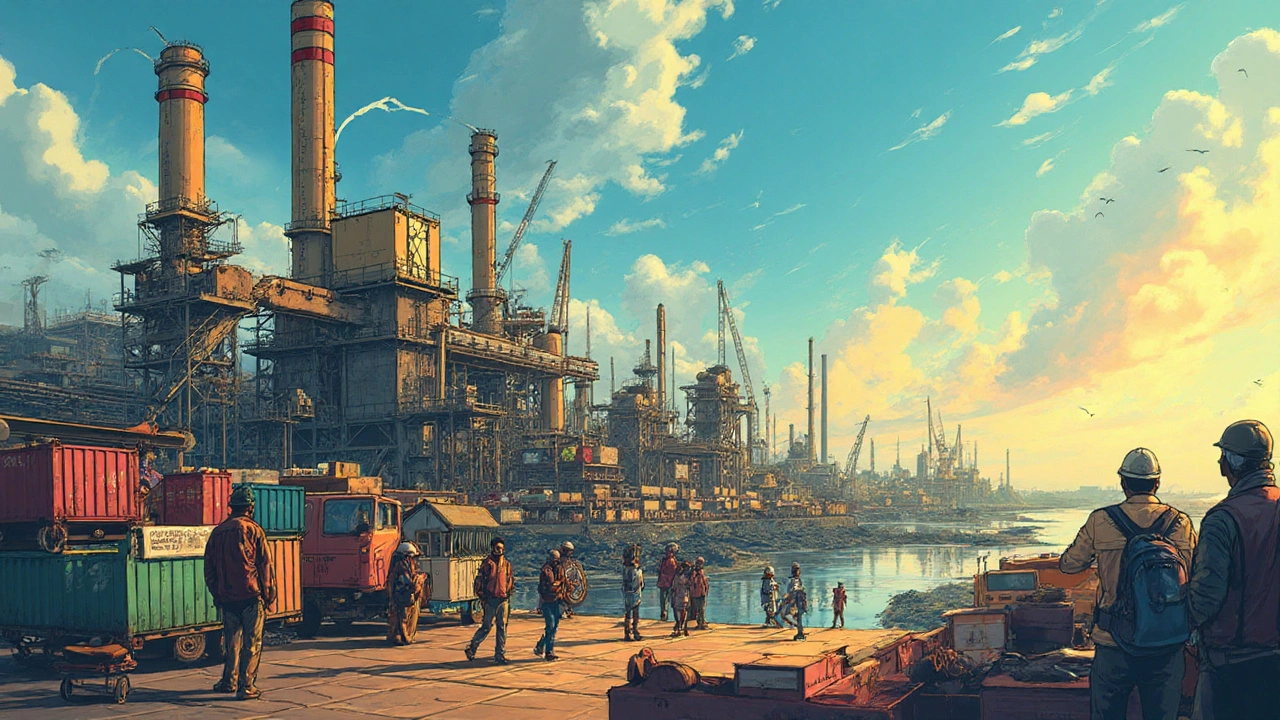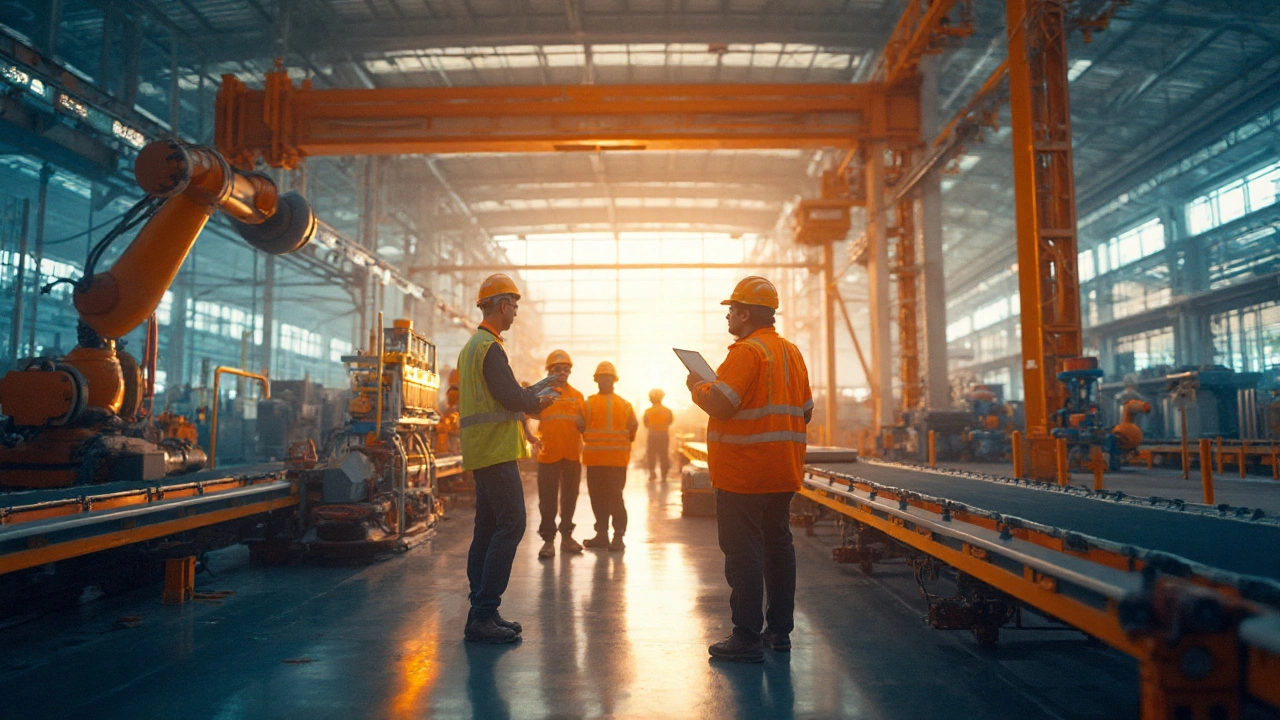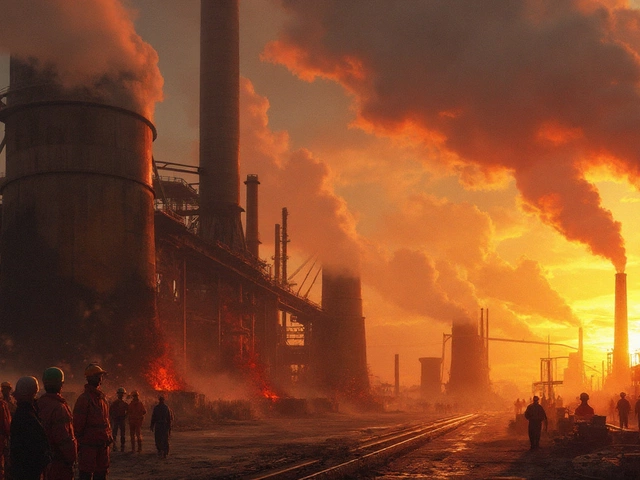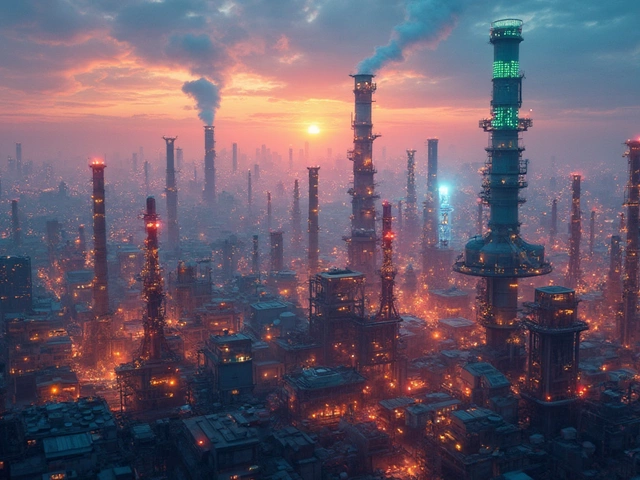Toyota churns out about 10 million vehicles a year. Samsung assembles more phones in a month than some countries do in a year. Every morning, hundreds of thousands clock into General Electric, Siemens, and Foxconn factories. But if you want to know who sits on the manufacturing throne, one name keeps ringing out: Foxconn. Odds are you have something in your pocket or home with its fingerprints on it. Talking gadgets, servers, game consoles, and even shiny iPhones—Foxconn makes more stuff for more brands than any other company on the planet. The next time someone mentions "the world’s factory," this is who they mean.
Meet the Giant: Foxconn’s Global Footprint
Walk through just about any electronics store, and you’re surrounded by Foxconn’s work—even if its logo never makes it to the retail shelf. Founded as Hon Hai Precision Industry Co., Ltd in 1974 by Terry Gou in Taiwan, Foxconn started with plastic switch knobs for television sets. Fast-forward to now and they have over a million employees worldwide, with giant industrial campuses dotting China, the US, Mexico, Brazil, and Europe. They don’t just run factories—they build entire mini-cities, known as “Foxconn cities,” some of which house over 350,000 workers. Foxconn doesn’t just assemble iPhones, even though that’s what they’re famous for. They’ve teamed up with Sony (think PlayStation), Microsoft (Xbox), Nintendo, HP, Dell, and many more. Daily, over 40% of all consumer electronics sold globally are believed to pass through their production lines.
Foxconn’s main plant in Zhengzhou, China, known by many as "iPhone City," pumps out upwards of 500,000 iPhones every day, especially during crunch time before a big Apple launch. But their reach goes well beyond just Apple. Need a Sharp TV or a Hewlett-Packard laptop? Odds are Foxconn touched that too. In 2025, their total annual revenue shot past $220 billion, outpacing names like Boeing, Volkswagen, and Toyota in the manufacturing world, though those companies still top in their specialties. The only names close to Foxconn’s sheer manufacturing scale are Samsung Electronics and State Grid Corporation of China but Foxconn still comes out on top when counting the diversity of what they make—phones, servers, TVs, robots, electric car parts, and cloud infrastructure.
Foxconn’s supply chain is insane. Some estimates say a single iPhone can be touched by 200,000 hands and travel through 43 countries before hitting store shelves. Not that the journey’s always pretty: the company takes heat for working conditions and the pressure it puts on its workforce. But with its ability to execute on such a massive scale, it has become a learning model for operational efficiency and supply chain speed. According to The Economist, "Foxconn changed how we think about scale in manufacturing—the planning alone is an Olympic-level sport."
"Foxconn’s sprawling network and deep relationships with tech giants make it not just the largest, but the most pivotal player in manufacturing today." — The Wall Street Journal, 2025

How Does a Company Get This Big? Secrets Behind the Scale
What makes Foxconn different from the old-school giants like General Motors or Volkswagen? One big thing: flexibility. Car makers need specialized plants for their complicated vehicles. Foxconn, on the other hand, designed most of its factories to swap out production lines quickly. Today they’re building PlayStations, tomorrow they might pivot to laptops, smart watches, or some new AI gadget. That’s how Foxconn could stay relevant as tech changed from TVs to PCs and now to smartphones and wearables. Their assembly lines constantly shift to fill whatever demand is surging. The logistics alone would spin most executives’ heads.
Foxconn also invests in just about every step of the process, from designing components to making robotic arms that can build those products. They build the tooling themselves, build chips in their own semiconductor facilities, and even make the robots that will later replace more repetitive human jobs. When there was a silicon shortage in 2021-2024, Foxconn started moving into chip manufacturing itself rather than waiting for someone else to solve their problem. That ability to take matters into their own hands sets them apart in the world of just-in-time manufacturing, where every minute and every screw counts. Some companies might balk at such risky investments, but it’s why Foxconn can keep rolling where smaller rivals get delayed.
One more secret: their labor force. Employing over a million people, mostly in China, means they can scale up or down faster than almost anyone. When a big Apple launch ramps up, Foxconn hires and trains tens of thousands in weeks, setting up elaborate operations to feed, house, and transport workers in and out of massive campuses. People have strong opinions about this system, but there’s no denying its raw power. It’s not just brute force either—Foxconn’s engineering staff has helped Apple tweak iPhone designs mid-launch and mass-produce them at breakneck speed. This partnership lets Apple (and others) dream up wild ideas and trust that, if anyone can actually build millions of them, it’s Foxconn.
Foxconn has proven far more adaptable than traditional western industrial giants. When COVID-19 slammed China in 2020, their plants didn’t stay down for long. They started turning out medical masks and ventilator parts, then segued right back to gadgets when demand surged again. Meanwhile, other giants like GE and Boeing struggled with cascading supply chain delays. That nimble mindset helped Foxconn keep revenue flowing and maintain its position at the top of the manufacturing food chain.

Why the Largest Factory Matters To All of Us
Some people think of manufacturing giants as faceless corporations, but Foxconn’s influence literally reaches into your kitchen, your office, even your car. It shapes technology trends, pricing, and the speed at which new innovations reach the public. When Apple, Sony, or Amazon dreams up a wild new gadget, it’s Foxconn that turns those sketches into millions of devices that end up in pockets and bedrooms all over the world. That fast turnaround drives the pace of tech innovation—if Foxconn couldn’t scale quickly, you probably wouldn’t see new phones, wearables, or gaming consoles on day one.
Foxconn isn’t just about electronics. Lately, they’ve become a major supplier for electric cars, building batteries and control modules for startups and big brands looking to catch Tesla. They’re investing in smart factories too: plants run partly by robots and powered by renewable energy. Foxconn says it wants to employ robots by the million and become carbon-neutral by 2050. If that sounds like sci-fi, remember this is the company that moved from TV knobs to controlling the tech supply chain in a single generation. When they set goals, the world pays attention.
The reach of Foxconn’s supply chain also means any hiccup—like COVID outbreaks, trade disputes, or part shortages—ripples out everywhere. If you had trouble finding a new phone or game console in 2022, Foxconn’s slowdowns were probably to blame. Retailers, tech companies, and even small entrepreneurs tune into their earnings calls, knowing Foxconn’s forecasts will reveal a lot about what’s coming soon in tech. Want to guess when the next iPhone might drop, or how EV production is ramping up? Look at what’s happening in Zhengzhou and Shenzhen.
For anyone studying business, supply chain, or global economics, Foxconn is a masterclass. Their scale means they have to consider international politics, currency fluctuations, and environmental laws more than almost any other company. When China and the US trade tensions ramped up a few years ago, Foxconn shifted to new plants in India, Vietnam, and Mexico practically overnight, just to keep deliveries on track. That agility shows how huge companies must now be global citizens—not just big local employers but companies ready to zigzag through diplomatic and logistical minefields on a daily basis.
But all this power also triggers debate around working conditions, unions, tech privacy, and the morality of profit vs. worker welfare. Foxconn has had to answer for everything from building "suicide nets" to labor protests and government fines. Recently, pressure from activists has nudged it toward wage hikes, workplace reforms, and automation aimed at making repetitive tasks less grinding. Still, every time a gadget launches, millions of people worldwide depend on Foxconn workers—often living far from their homes, saving up wages to send back to their families.
So next time you open a smartphone or sit down at a laptop, remember the journey those bits and bytes took. Behind every glowing screen or buzzing device, there’s an industrial giant keeping the gears turning. Foxconn, more than any other, shapes those currents. It’s more than just the largest manufacturing company; it’s the beating heart of the world’s global supply chain. If you want to get a glimpse of the future of making things, don’t just look at the shiny end product—look at the massive, tireless machine behind it. That’s where real power is made.







